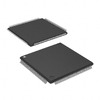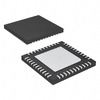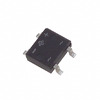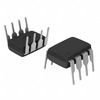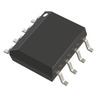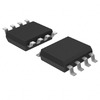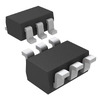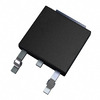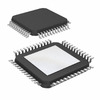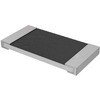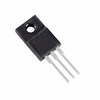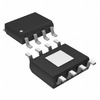HomeBlogAG1 Battery Guide - Technical Specifications, Applications, Equivalent Cells and Comparison to AG4
AG1 Battery Guide - Technical Specifications, Applications, Equivalent Cells and Comparison to AG4
The AG1 battery, widely known as the LR621, is a ubiquitous small coin cell battery on the market. It has a sophisticated design and is tailor-made for various portable electronic devices. The two main chemical versions of this battery—alkaline and silver oxide—each have their unique advantages, with the silver oxide version (commonly labeled SR621SW) providing more stable voltage and longer life over its lifetime. And much favored. The AG1 battery is small in size, with a diameter of only 6.8 mm and a height of 2.1 mm. It can still work stably under extreme temperature conditions (from -30°C to +60°C), and its ideal operating temperature is 20°C.
Catalog
1. AG1 battery overview

The AG1 battery, commonly known as LR621, is a small coin cell battery widely used in a variety of portable electronic devices. AG1 batteries are known for their compact, efficient design and come in two main chemistries: alkaline and silver oxide. The silver oxide variant, often labeled SR621SW, is particularly valued for its ability to maintain a stable voltage throughout its service life and for longer durability. The AG1 battery is only 6.8mm in diameter and 2.1mm tall, making it perfect for tight spaces within devices. It operates effectively over a wide temperature range from as low as -30°C to as high as +60°C. However, it performs best at moderate temperatures around 20°C.
2. Technical specifications of AG1 battery
- • Chemical composition: There are two types: alkaline and silver oxide. The silver oxide version is identified as SR621SW.
- • Voltage: Alkaline cells provide a standard voltage of 1.5 volts, and silver oxide cells have a slightly higher voltage of 1.55 volts.
- • Diameter: approx. 6.8 mm.
- • Height: approx. 2.1 mm.
- • Approximate weight: approx. 0.28 g.
- • End voltage: Operating voltage as low as 0.9 volts before the battery is exhausted.
- • Storage humidity: 60±15%RH (no condensation, ensuring long-term efficiency)
- • Capacity: Alkaline versions are usually around 9mAh. Capacities may vary slightly depending on the manufacturer and the battery's specific application. The silver oxide version has higher capacity and stable voltage output, making it ideal for devices such as watches that require stable and long-term power supply.
- • Compatibility and equivalency: Alkaline version equivalent batteries are LR60, 164, LR621. Silver oxide equivalents are 364 and SR621SW.
3. AG1 battery application
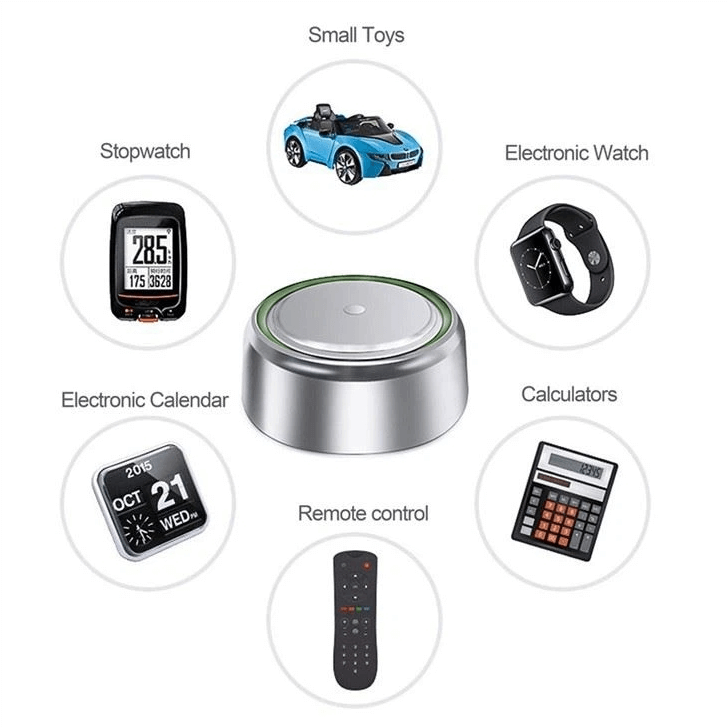
- • watch
- • calculator
- • electronic toy
- • Laser pointer
- • Small flashlight
- • Medical equipment, such as maintaining reliable power for critical health monitoring tools.
In terms of applications, application fields are usually divided according to component versions. The alkaline version of AG1, usually labeled LR621, is particularly suitable for devices that require intermittent high-energy output because it can quickly provide high peak current. In contrast, the silver-oxide version of the AG1, commonly identified as SR621SW, is designed for use in precision equipment that requires long-term and stable power.
4. AG1 battery equivalents and equivalents
4.1 Alkaline Equivalents:
Primary AG1 Alkaline Model: LR621, a 1.5V battery.
Common Alkaline Substitutes: These are batteries that you can use in place of an LR621 if it's not available:
- • LR60
- • 080-D29
- • G1A
- • L621
- • LR620
- • LR621W
4.2 Silver Oxide Equivalents:
Silver Oxide Options: For devices that require a more stable and long-lasting power source, silver oxide batteries can replace the AG1 alkaline versions.
List of Silver Oxide Substitutes:
- • 164, 364/363, CX60, D364, E364, GP364
- • S621E, SA621SW, SB-DG, SB-AG, SG1, SP364
- • SR60, SR60L, SR620SW, SR621 (including muRata SR621)
- • SR621SW, SR621W (including Maxell SR621SW, Seiko SR621SW)
- • V364, V531, W1V, 364A, 364B
5. Advantages and disadvantages of AG1 battery
5.1 advantage:
- • Long Shelf Life: If stored under optimal conditions, AG1 batteries can last for more than five years. This means the battery is replaced less frequently and performs reliably at the end of its life.
- • Wide operating temperature range: Effective operation between -30°C to +60°C. Ideal for use in a variety of climates, from freezing temperatures to scorching heat, without compromising performance.
- • Stable voltage output: Provides stable voltage throughout its service life. Make sure devices like watches and calculators work smoothly and accurately without unexpected shutdowns or power issues.
- • Leak-Proof Design: Minimizes the risk of damaging leaks. Protect sensitive electronic components in equipment and extend their service life.
5.2 shortcoming:
- • Higher Cost: Typically more expensive than some other alkaline batteries on the market. Users may weigh costs against advantages such as longevity and stability before purchasing.
- • Lower Capacity: Lower energy capacity compared to larger batteries. May not be suitable for power-hungry devices or devices that require long periods of uninterrupted use.
6. The difference between AG1 and AG4 batteries
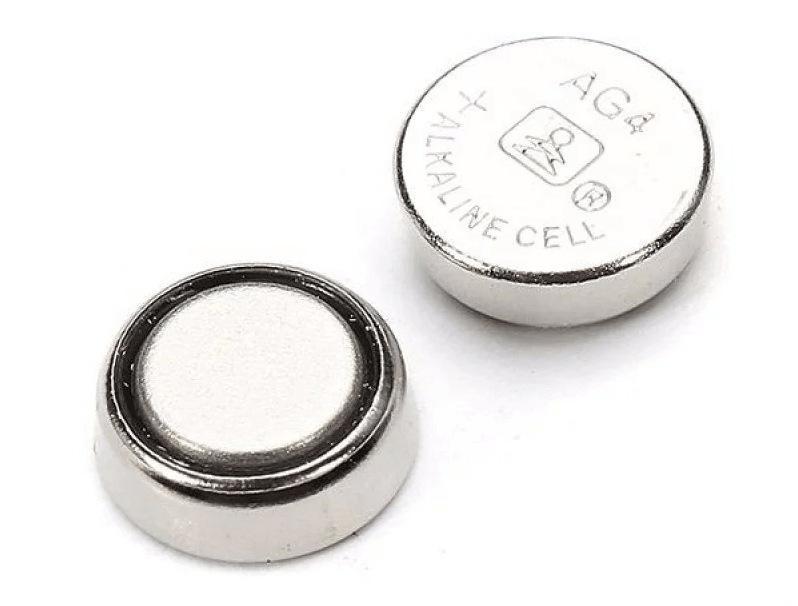
Available in alkaline (LR626) and silver oxide (SR626SW) versions, the AG4 battery is a versatile coin cell battery. It has a diameter of about 6.8 mm and a height of about 2.6 mm, which is slightly larger than the AG1. This size gives the AG4 a balance between a compact design and extended battery life. The oxidized silver model SR626SW is particularly popular for its higher capacity and stable voltage output, making it ideal for powering devices such as watches, small toys, and some medical devices that require reliability and compact, long-lasting power.
6.1 Features of AG4 battery
- • Chemical Composition: Available in alkaline or silver oxide versions, the silver oxide version is usually labeled SR626SW.
- • Voltage: Both versions typically offer 1.5 volts, similar to the AG1, with silver oxide sometimes offering up to 1.55 volts for enhanced performance.
- • Physical Dimensions: Same 6.8mm diameter as AG1, but 2.6mm taller for greater capacity.
- • Capacity: Varies by type and manufacturer. Silver oxide versions generally offer higher capacities.
- • Applications: For use in devices that may require more power or longer life than devices using AG1, such as certain calculators, toys, and medical equipment.
- • Compatibility & Equivalency: AG4 matches other battery models including alkaline LR626, 177, 376, 377 and silver oxide SR626SW.
6.2 AG1 and AG4 battery comparison


- • Chemical Composition: Both batteries are alkaline and silver oxide. The basic AG1 is called LR621 and its AG4 counterpart is called LR626. Their silver oxide versions are SR621SW and SR626SW respectively.
- • Voltage: Both battery types provide a nominal voltage of 1.5 volts through different chemistries.
- • Capacity: While capacities vary, AG4 batteries (especially the silver oxide form) generally offer higher capacity than AG1, supporting longer device use.
- • Size: Both have the same diameter, 6.8mm. The AG4 is taller at 2.6mm than the AG1's 2.1mm, allowing for greater capacity.
- • Selection Criteria: The choice between AG1 and AG4 often depends on device requirements, including power needs, space constraints, and expected battery life. Slight size differences may affect compatibility with some devices.
7. Summary
Whether in watches, calculators, medical equipment, or other small electronic toys and tools that require reliable power, AG1 batteries have become an essential electronic component due to their outstanding performance characteristics and adaptability. The choice between AG1 or AG4 batteries, or any other battery type, must take into account the specific needs of the device, space constraints, and expected lifespan. When operating and replacing batteries, it is equally important to properly identify and dispose of old batteries. Therefore, rational selection and use of batteries can not only optimize device performance but also extend the service life of the device, thereby achieving a win-win situation between technology and environmental protection.
Frequently Asked Questions [FAQ]
1. What kind of battery can be used to replace AG1?
AG1 batteries are small coin cells commonly used in watches and tiny electronic devices. Choosing Compatible Batteries You may also consider the LR621 or SR621SW batteries as alternatives. Both types match the AG1 in voltage and shape. They are interchangeable with the AG1 and provide reliable power to keep your equipment running smoothly.
2. Are AG1 batteries the same as 364?
Yes, AG1 and 364 batteries are basically the same. Their dimensions (6.8mm diameter and 2.1mm height) and voltage (1.5 volts) are consistent and can often be used interchangeably.
3. Is SR621SW the same as AG1?
Like the AG1, it measures the same and provides the same voltage. However, SR621SW contains silver oxide, which results in more stable performance and longer life.
4. Are LR batteries and AG batteries the same?
Difference Between LR and AG Batteries The main difference between LR and AG batteries is their chemical composition. LR batteries are alkaline batteries while AG batteries are made of silver oxide. Although they may be similar in size, this difference affects their voltage stability and lifespan.
5. What does AG in the battery mean?
What “AG” Means in Battery Terminology In battery terminology, “AG” stands for Argentum, the Latin word for silver. AG batteries generally refer to batteries that use silver oxide as the positive electrode material.
About us
ALLELCO LIMITED
Read more
Quick inquiry
Please send an inquiry, we will respond immediately.
→ Previous
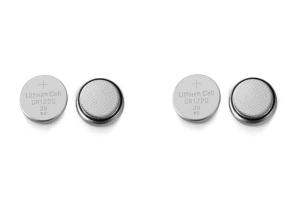
The CR1220 battery is a main part of many modern devices, like car key fobs and medical equipment. Though small, this lithium battery is powerful, helping small electronics run reliably. This article looks at the features, equivalent options, uses, and care tips for the CR1220 battery, showing how w...

In the modern household, a microwave oven is as essential as any major appliance, yet its energy demands and efficiency are often overlooked. The primary power requirement for a microwave varies significantly depending on the model and size, ranging from a modest 500 watts for compact units to a rob...
→ Next

CR1220 Battery: Specifications, Features and Applications
on May 7th

How to Calculate the Power Usage of a Microwave Oven?
on May 6th
Popular Posts
-

What is GND in the circuit?
on January 1th 3251
-

RJ-45 Connector Guide: RJ-45 Connector Color Codes, Wiring Schemes, R-J45 Applications, RJ-45 Datasheets
on January 1th 2801
-

Understanding Power Supply Voltages in Electronics VCC, VDD, VEE, VSS, and GND
on November 19th 2605
-

Fiber Connector Types: SC Vs LC And LC Vs MTP
on January 1th 2249
-

Comparison Between DB9 and RS232
on January 1th 1867
-

What Is An LR44 Battery?
Electricity, that ubiquitous force, quietly permeates every aspect of our daily lives, from trivial gadgets to life-threatening medical equipment, it plays a silent role. However, truly grasping this energy, especially how to store and efficiently output it, is no easy task. It is against this background that this article will focus on a type of coin cell battery that may seem insignificant on the...on January 1th 1836
-

Understanding the Fundamentals:Inductance Resistance, andCapacitance
In the intricate dance of electrical engineering, a trio of fundamental elements takes center stage: inductance, resistance, and capacitance. Each bears unique traits that dictate the dynamic rhythms of electronic circuits. Here, we embark on a journey to decipher the complexities of these components, to uncover their distinct roles and practical uses within the vast electrical orchestra. Inductan...on January 1th 1789
-

What Is RF and Why Do We Use It?
Radio Frequency (RF) technology is a key part of modern wireless communication, enabling data transmission over long distances without physical connections. This article delves into the basics of RF, explaining how electromagnetic radiation (EMR) makes RF communication possible. We will explore the principles of EMR, the creation and control of RF signals, and their wide-ranging uses. The article ...on January 1th 1779
-

CR2430 Battery Comprehensive Guide: Specifications, Applications and Comparison to CR2032 Batteries
What is CR2430 battery ?Benefits of CR2430 BatteriesNormCR2430 Battery ApplicationsCR2430 EquivalentCR2430 VS CR2032Battery CR2430 SizeWhat to look for when buying the CR2430 and equivalentsData Sheet PDFFrequently Asked Questions Batteries are the heart of small electronic devices. Among the many types available, coin cells play a crucial role, commonly found in calculators, remote controls, and ...on January 1th 1775
-

Comprehensive guide to hFE in transistors
Transistors are crucial components in modern electronic devices, enabling signal amplification and control. This article delves into the knowledge surrounding hFE, including how to select a transistor's hFE value, how to find hFE, and the gain of different types of transistors. Through our exploration of hFE, we gain a deeper understanding of how transistors work and their role in electronic circu...on November 19th 1760
